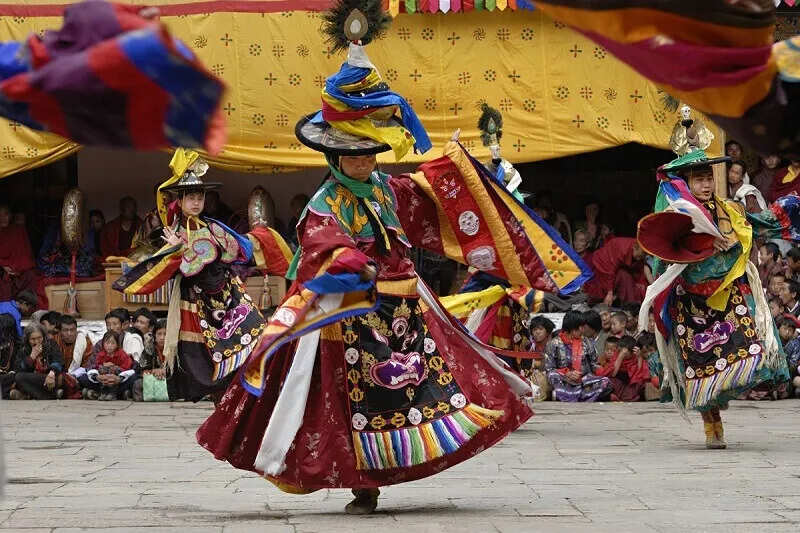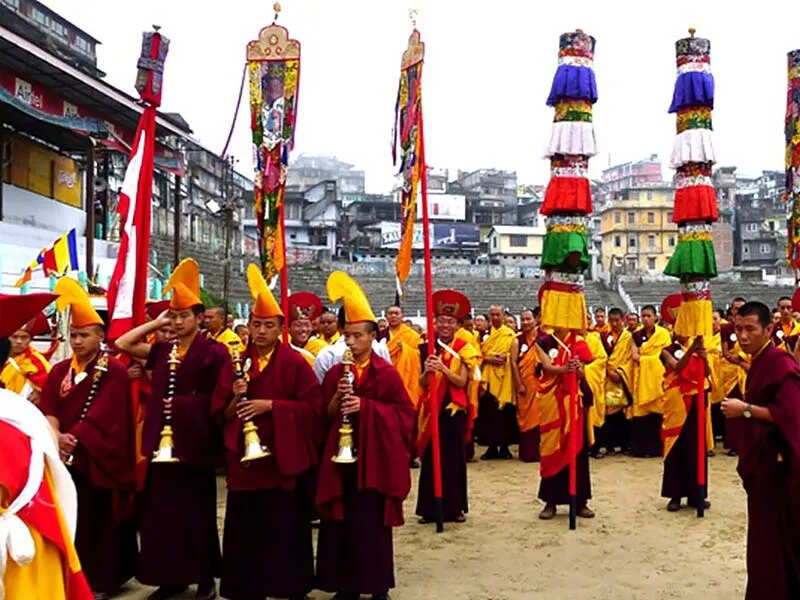Top 5 Festivals Celebrated In Sikkim

Sikkim, nestled in the northeastern part of India, is a land of pristine beauty, rich culture, and diverse traditions. The state's festivals are a vivid reflection of its unique blend of Tibetan Buddhism and indigenous cultures. Sikkim's festivals are celebrated with great zeal and enthusiasm, showcasing the region's cultural diversity. In this article, we will explore the top five festivals celebrated in Sikkim, each offering a glimpse into the vibrant heritage of this Himalayan state.
- Losar - The Tibetan New Year

Losar, also known as the Tibetan New Year, is one of the most important festivals in Sikkim. It marks the beginning of the lunar calendar year and is celebrated with grandeur by the Tibetan Buddhist community. The festivities last for several days and typically include colorful masked dances, prayers, and rituals at monasteries across the state. People exchange traditional greetings, offer prayers for good fortune, and decorate their homes with beautiful motifs and colorful prayer flags.
- Dashain (Dussehra)
Dashain, also known as Dussehra in other parts of India, is another significant festival celebrated in Sikkim. Dashain is a Hindu festival celebrated in Sikkim, signifying the triumph of the goddess Durga over the demon Mahishasura. This significant celebration sees families gathering to pay homage to goddess Durga, where elders apply 'tikka'—a combination of yogurt, rice, and vermilion—on the foreheads of younger family members. This act symbolizes blessings and protection as a part of the festive rituals. It is a time of feasting, receiving blessings, and cultural performances.
- Tihar (Deepawali)
Tihar, also known as Deepawali or the Festival of Lights, is a Hindu festival celebrated with great enthusiasm in Sikkim. It is a five-day festival that honors various animals, including crows, dogs, and cows, as well as the goddess of wealth, Laxmi. Each day has its own unique rituals, and houses are adorned with oil lamps, candles, and colorful rangoli designs. The lighting of lamps symbolizes the victory of light over darkness and good over evil.
- Saga Dawa

Saga Dawa is an important Buddhist festival celebrated on the full moon day of the fourth lunar month. This festival is dedicated to remembering the birth, enlightenment, and passing of Lord Buddha. During this festival, devotees visit monasteries, light butter lamps, offer prayers, and participate in religious processions. One of the most significant rituals of Saga Dawa is the circumambulation of the sacred Mt. Kanchenjunga by devotees, which is believed to accumulate merit.
- Namsoong (Nepali New Year)
Namsoong, the Nepali New Year, is celebrated with great zeal by the Nepali-speaking community in Sikkim. It usually falls in mid-April and marks the beginning of the Nepali calendar year. The festival is characterized by cultural performances, feasting, and traditional dances. People clean their homes, wear new clothes, and exchange gifts and greetings with loved ones.This period signifies a time for rejuvenation and new opportunities.
Conclusion
Sikkim's festivals offer a unique opportunity to witness the rich cultural tapestry of the state. Whether you are intrigued by the Tibetan Buddhist traditions, the vibrant Hindu celebrations, or the cultural diversity of Sikkim, these festivals provide a wonderful insight into the region's heritage. Losar, Dashain, Tihar, Saga Dawa, and Namsoong are just a few examples of the many festivals that grace Sikkim's calendar throughout the year. So, if you're planning a visit to this enchanting Himalayan state, try to coincide your trip with one of these vibrant celebrations to experience the true spirit of Sikkim.

